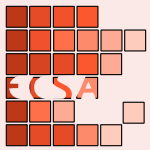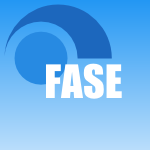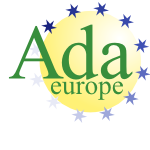68 papers:
 ICEIS-v2-2015-JuniorP #approach #identification #named #ontology #requirements
ICEIS-v2-2015-JuniorP #approach #identification #named #ontology #requirements- OnTheme/Doc — An Ontology-based Approach for Crosscutting Concern Identification from Software Requirements (PAPJ, RADP), pp. 188–200.
 ECMFA-2015-KhanAIU #constraints #named #ocl
ECMFA-2015-KhanAIU #constraints #named #ocl- AspectOCL: Extending OCL for Crosscutting Constraints (MUK, NA, MZI, HU), pp. 92–107.
 ICSME-2014-KhanIA #approach #behaviour #heuristic #state machine #uml
ICSME-2014-KhanIA #approach #behaviour #heuristic #state machine #uml- A Heuristic-Based Approach to Refactor Crosscutting Behaviors in UML State Machines (MUK, MZI, SA), pp. 557–560.
 ICEIS-v2-2014-SilvaMS #aspect-oriented #bibliography #evaluation #performance #programming
ICEIS-v2-2014-SilvaMS #aspect-oriented #bibliography #evaluation #performance #programming- A Systematic Review on Performance Evaluation of Aspect-Oriented Programming Techniques used to Implement Crosscutting Concerns (RFGdS, MdAM, MSS), pp. 5–13.
 ICSE-2014-MaozRR #component #modelling #verification
ICSE-2014-MaozRR #component #modelling #verification- Verifying component and connector models against crosscutting structural views (SM, JOR, BR), pp. 95–105.
 SEKE-2013-MarcalGCJ #identification #mining #repository #using
SEKE-2013-MarcalGCJ #identification #mining #repository #using- Mining Software Repository to Identify Crosscutting Concerns Using Combined Techniques (S) (IM, REG, RCMC, COJ), pp. 338–343.
 SAC-2013-DurelliSADC #bibliography #mining
SAC-2013-DurelliSADC #bibliography #mining- A systematic review on mining techniques for crosscutting concerns (RSD, DSMS, NA, MED, VVdC), pp. 1080–1087.
 ESEC-FSE-2013-MaozRR #component #modelling #synthesis
ESEC-FSE-2013-MaozRR #component #modelling #synthesis- Synthesis of component and connector models from crosscutting structural views (SM, JOR, BR), pp. 444–454.
 ICEIS-J-2012-GottardiPC12a #approach #framework #modelling #reuse #using
ICEIS-J-2012-GottardiPC12a #approach #framework #modelling #reuse #using- Accelerating Crosscutting Framework Reuse Using a Model-Based Approach (TG, OPL, VVdC), pp. 257–273.
 ICEIS-v2-2012-GottardiPC #approach #framework #modelling #reuse
ICEIS-v2-2012-GottardiPC #approach #framework #modelling #reuse- A Model-based Approach for Reusing Crosscutting Frameworks (TG, OPL, VVdC), pp. 46–55.
 SEKE-2012-CuiWLBZL #aspect-oriented #diagrams #petri net #process #verification
SEKE-2012-CuiWLBZL #aspect-oriented #diagrams #petri net #process #verification- Verifying Aspect-Oriented Activity Diagrams Against Crosscutting Properties with Petri Net Analyzer (ZC, LW, XL, LB, JZ, XL), pp. 369–374.
 SAC-2012-SantosCSLB #analysis #heuristic #identification #modelling #process
SAC-2012-SantosCSLB #analysis #heuristic #identification #modelling #process- Analysis of heuristics to identify crosscutting concerns in business process models (FJNS, CC, FMS, JCSdPL, TVB), pp. 1725–1726.
 FSE-2012-WalkerRS #composition #problem #question
FSE-2012-WalkerRS #composition #problem #question- Do crosscutting concerns cause modularity problems? (RJW, SR, JS), p. 49.
 ICSE-2012-IfrahL
ICSE-2012-IfrahL- Crosscutting revision control system (SI, DHL), pp. 321–330.
 ICSM-2011-RastkarMB #generative #natural language #source code #summary
ICSM-2011-RastkarMB #generative #natural language #source code #summary- Generating natural language summaries for crosscutting source code concerns (SR, GCM, AWJB), pp. 103–112.
 SAC-2011-HorieMC #distributed #weaving
SAC-2011-HorieMC #distributed #weaving- Distributed dynamic weaving is a crosscutting concern (MH, SM, SC), pp. 1353–1360.
 ICPC-2010-BernardiL #identification #object-oriented
ICPC-2010-BernardiL #identification #object-oriented- The ConAn Tool to Identify Crosscutting Concerns in Object Oriented Systems (MLB, GADL), pp. 48–49.
 SEKE-2010-NakagawaTM #configuration management #testing
SEKE-2010-NakagawaTM #configuration management #testing- Software Configuration Management as a Crosscutting Concern: An Example on Software Testing (EYN, JVTT, JCM), pp. 628–633.
 OOPSLA-2010-ChibaIZ #compilation #composition
OOPSLA-2010-ChibaIZ #compilation #composition- Mostly modular compilation of crosscutting concerns by contextual predicate dispatch (SC, AI, SZ), pp. 539–554.
 SAC-2010-AntonelliRL #domain model #identification
SAC-2010-AntonelliRL #domain model #identification- Early identification of crosscutting concerns in the domain model guided by states (LA, GR, JCSdPL), pp. 275–280.
 SAC-2010-EbraertDMJ #feature model
SAC-2010-EbraertDMJ #feature model- Intensional changes: modularizing crosscutting features (PE, TD, TM, DJ), pp. 2176–2182.
 ICSE-2010-AdamsJH #identification #using
ICSE-2010-AdamsJH #identification #using- Identifying crosscutting concerns using historical code changes (BA, ZMJ, AEH), pp. 305–314.
 ICPC-2009-FigueiredoSSGWN #analysis #design
ICPC-2009-FigueiredoSSGWN #analysis #design- Crosscutting patterns and design stability: An exploratory analysis (EF, BCdS, CS, AFG, JW, DJN), pp. 138–147.
 ICPC-2009-ZhangDH #aspectj #impact analysis #tool support #visualisation
ICPC-2009-ZhangDH #aspectj #impact analysis #tool support #visualisation- Impact analysis and visualization toolkit for static crosscutting in AspectJ (DZ, EDE, LJH), pp. 60–69.
 WCRE-1999-BernardiL99a #analysis #identification #named #object-oriented
WCRE-1999-BernardiL99a #analysis #identification #named #object-oriented- ConAn: A Tool for the Identification of Crosscutting Concerns in Object Oriented Systems Based on Type Hierarchy Analysis (MLB, GADL), pp. 319–320.
 WCRE-1999-CostaJCP99a #modelling
WCRE-1999-CostaJCP99a #modelling- Recovering Class Models Stereotyped with Crosscutting Concerns (HAXC, PAPJ, VVdC, RADP), pp. 311–312.
 TOOLS-EUROPE-2009-ConejeroFGHJ #metric #predict
TOOLS-EUROPE-2009-ConejeroFGHJ #metric #predict- Early Crosscutting Metrics as Predictors of Software Instability (JMC, EF, AG, JH, EJ), pp. 136–156.
 SAC-2009-SchippersHH #implementation
SAC-2009-SchippersHH #implementation- An implementation substrate for languages composing modularized crosscutting concerns (HS, MH, RH), pp. 1944–1951.
 ESEC-FSE-2009-FigueiredoWG #detection #named
ESEC-FSE-2009-FigueiredoWG #detection #named- ConcernMorph: metrics-based detection of crosscutting patterns (EF, JW, AFG), pp. 299–300.
 PASTE-2008-ShonleGL #problem
PASTE-2008-ShonleGL #problem- Addressing common crosscutting problems with Arcum (MS, WGG, SL), pp. 64–69.
 WCRE-2008-IshioDMI #detection #java #mining #source code
WCRE-2008-IshioDMI #detection #java #mining #source code- Mining Coding Patterns to Detect Crosscutting Concerns in Java Programs (TI, HD, TM, KI), pp. 123–132.
 SEKE-2008-MahoneyE #monitoring #using
SEKE-2008-MahoneyE #monitoring #using- Using Scenario Monitoring to Address State Based Crosscutting Concerns (MM, TE), pp. 581–586.
 OOPSLA-2008-SchippersJHH #semantics
OOPSLA-2008-SchippersJHH #semantics- Delegation-based semantics for modularizing crosscutting concerns (HS, DJ, MH, RH), pp. 525–542.
 TOOLS-EUROPE-2008-KuhlemannARL #composition #design pattern #multi #paradigm
TOOLS-EUROPE-2008-KuhlemannARL #composition #design pattern #multi #paradigm- A Multiparadigm Study of Crosscutting Modularity in Design Patterns (MK, SA, MR, RELH), pp. 121–140.
 SAC-2008-ArimotoCC #development #version control
SAC-2008-ArimotoCC #development #version control- Version control in crosscutting framework-based development (MMA, MIC, VVdC), pp. 753–758.
 SAC-2008-CamargoM #design #framework
SAC-2008-CamargoM #design #framework- A pattern to design crosscutting frameworks (VVdC, PCM), pp. 759–764.
 SAC-2008-Juarez-MartinezO #named
SAC-2008-Juarez-MartinezO #named- Énfasis: a model for local variable crosscutting (UJM, JOOA), pp. 261–265.
 ECSA-2007-FuentesGPV #architecture #using
ECSA-2007-FuentesGPV #architecture #using- Using Connectors to Model Crosscutting Influences in Software Architectures (LF, NG, MP, JAV), pp. 292–295.
 ECSA-2007-MolesiniGCB #on the
ECSA-2007-MolesiniGCB #on the- On the Interplay of Crosscutting and MAS-Specific Styles (AM, AG, CC, TVB), pp. 317–320.
 FASE-2007-Lopez-HerrejonA #case study #metric #source code
FASE-2007-Lopez-HerrejonA #case study #metric #source code- Measuring and Characterizing Crosscutting in Aspect-Based Programs: Basic Metrics and Case Studies (RELH, SA), pp. 423–437.
 ICSM-2007-Bruntink #analysis #legacy
ICSM-2007-Bruntink #analysis #legacy- Analysis and Transformation of Idiomatic Crosscutting Concerns in Legacy Software Systems (MB), pp. 499–500.
 SCAM-2007-AversanoCP #design pattern #evolution
SCAM-2007-AversanoCP #design pattern #evolution- Relating the Evolution of Design Patterns and Crosscutting Concerns (LA, LC, MDP), pp. 180–192.
 SCAM-2007-MarinMD #migration
SCAM-2007-MarinMD #migration- An Integrated Crosscutting Concern Migration Strategy and its Application to JHOTDRAW (MM, LM, AvD), pp. 101–110.
 WCRE-2007-MarinMD
WCRE-2007-MarinMD- Documenting Typical Crosscutting Concerns (MM, LM, AvD), pp. 31–40.
 ILC-2007-HerzeelGCD #e-commerce #lisp #using
ILC-2007-HerzeelGCD #e-commerce #lisp #using- Modularizing crosscuts in an e-commerce application in Lisp using HALO (CH, KG, PC, TD), p. 11.
 TOOLS-EUROPE-2007-HundtMPS #feature model #product line
TOOLS-EUROPE-2007-HundtMPS #feature model #product line- Improving Alignment of Crosscutting Features with Code in Product Line Engineering (CH, KM, CP, DS), pp. 417–436.
 RE-2007-ConejeroHMA #requirements #using
RE-2007-ConejeroHMA #requirements #using- Discovering Volatile and Aspectual Requirements Using a Crosscutting Pattern (JMC, JH, AMDM, JA), pp. 391–392.
 ESEC-FSE-2007-ShonleGL #composition #design #framework #maintenance #refactoring
ESEC-FSE-2007-ShonleGL #composition #design #framework #maintenance #refactoring- Beyond refactoring: a framework for modular maintenance of crosscutting design idioms (MS, WGG, SL), pp. 175–184.
 ICSE-2007-MarinMD #documentation #named
ICSE-2007-MarinMD #documentation #named- SoQueT: Query-Based Documentation of Crosscutting Concerns (MM, LM, AvD), pp. 758–761.
 ICSM-2006-CanforaCP #co-evolution #identification #on the
ICSM-2006-CanforaCP #co-evolution #identification #on the- On the Use of Line Co-change for Identifying Crosscutting Concern Code (GC, LC, MDP), pp. 213–222.
 WCRE-2006-Krinke #control flow #graph #mining
WCRE-2006-Krinke #control flow #graph #mining- Mining Control Flow Graphs for Crosscutting Concerns (JK), pp. 334–342.
 WCRE-2006-MarinMD #framework #mining
WCRE-2006-MarinMD #framework #mining- A common framework for aspect mining based on crosscutting concern sorts (MM, LM, AvD), pp. 29–38.
 RE-2006-ChenZZM #analysis #dependence #identification #requirements
RE-2006-ChenZZM #analysis #dependence #identification #requirements- Identification of Crosscutting Requirements Based on Feature Dependency Analysis (KC, HZ, WZ, HM), pp. 300–303.
 SAC-2006-MaiaMFCS #grid #process
SAC-2006-MaiaMFCS #grid #process- A process for separation of crosscutting grid concerns (PHMM, NCM, VF, WC, KBS), pp. 1569–1574.
 ICSE-2006-DengSG #aspect-oriented #deployment #development #distributed #embedded #modelling #realtime
ICSE-2006-DengSG #aspect-oriented #deployment #development #distributed #embedded #modelling #realtime- Addressing crosscutting deployment and configuration concerns of distributed real-time and embedded systems via aspect-oriented & model-driven software development (GD, DCS, ASG), pp. 811–814.
 ICSM-2005-BruntinkDT
ICSM-2005-BruntinkDT- Isolating Idiomatic Crosscutting Concerns (MB, AvD, TT), pp. 37–46.
 ICSM-2005-MarinMD #classification
ICSM-2005-MarinMD #classification- A Classification of Crosscutting Concerns (MM, LM, AvD), pp. 673–676.
 MoDELS-2005-DeublerMRK #diagrams #modelling #sequence chart #uml
MoDELS-2005-DeublerMRK #diagrams #modelling #sequence chart #uml- Modeling Crosscutting Services with UML Sequence Diagrams (MD, MM, SR, IK), pp. 522–536.
 MoDELS-2005-TkatchenkoK #modelling
MoDELS-2005-TkatchenkoK #modelling- Uniform Support for Modeling Crosscutting Structure (MT, GK), pp. 508–521.
 MoDELS-2005-DeublerMRK #diagrams #modelling #sequence chart #uml
MoDELS-2005-DeublerMRK #diagrams #modelling #sequence chart #uml- Modeling Crosscutting Services with UML Sequence Diagrams (MD, MM, SR, IK), pp. 522–536.
 MoDELS-2005-TkatchenkoK #modelling
MoDELS-2005-TkatchenkoK #modelling- Uniform Support for Modeling Crosscutting Structure (MT, GK), pp. 508–521.
 ICSM-2004-BruntinkDTE #clone detection #detection #evaluation #identification
ICSM-2004-BruntinkDTE #clone detection #detection #evaluation #identification- An Evaluation of Clone Detection Techniques for Identifying Crosscutting Concerns (MB, AvD, TT, RvE), pp. 200–209.
 ECOOP-2004-JanzenV #effectiveness #programming
ECOOP-2004-JanzenV #effectiveness #programming- Programming with Crosscutting Effective Views (DJ, KDV), pp. 195–218.
 ICSE-2004-WohlstadterJD #design #distributed #feature model #implementation
ICSE-2004-WohlstadterJD #design #distributed #feature model #implementation- Design and Implementation of Distributed Crosscutting Features with DADO (EW, SJ, PTD), pp. 706–707.
 AdaEurope-2003-MeziniO #modelling
AdaEurope-2003-MeziniO #modelling- Modules for Crosscutting Models (MM, KO), pp. 24–44.
 ECOOP-2003-MasuharaK #aspect-oriented #modelling
ECOOP-2003-MasuharaK #aspect-oriented #modelling- Modeling Crosscutting in Aspect-Oriented Mechanisms (HM, GK), pp. 2–28.
 ICSE-2003-WohlstadterJD #distributed #feature model #middleware #named
ICSE-2003-WohlstadterJD #distributed #feature model #middleware #named- DADO: Enhancing Middleware to Support Crosscutting Features in Distributed, Heterogeneous Systems (EW, SJ, PTD), pp. 174–186.
 SEKE-2002-MoreiraAB #quality #requirements
SEKE-2002-MoreiraAB #quality #requirements- Crosscutting quality attributes for requirements engineering (AMDM, JA, ISB), pp. 167–174.
 ICEIS-v2-2015-JuniorP #approach #identification #named #ontology #requirements
ICEIS-v2-2015-JuniorP #approach #identification #named #ontology #requirements ECMFA-2015-KhanAIU #constraints #named #ocl
ECMFA-2015-KhanAIU #constraints #named #ocl ICSME-2014-KhanIA #approach #behaviour #heuristic #state machine #uml
ICSME-2014-KhanIA #approach #behaviour #heuristic #state machine #uml ICEIS-v2-2014-SilvaMS #aspect-oriented #bibliography #evaluation #performance #programming
ICEIS-v2-2014-SilvaMS #aspect-oriented #bibliography #evaluation #performance #programming ICSE-2014-MaozRR #component #modelling #verification
ICSE-2014-MaozRR #component #modelling #verification SEKE-2013-MarcalGCJ #identification #mining #repository #using
SEKE-2013-MarcalGCJ #identification #mining #repository #using SAC-2013-DurelliSADC #bibliography #mining
SAC-2013-DurelliSADC #bibliography #mining ESEC-FSE-2013-MaozRR #component #modelling #synthesis
ESEC-FSE-2013-MaozRR #component #modelling #synthesis ICEIS-J-2012-GottardiPC12a #approach #framework #modelling #reuse #using
ICEIS-J-2012-GottardiPC12a #approach #framework #modelling #reuse #using ICEIS-v2-2012-GottardiPC #approach #framework #modelling #reuse
ICEIS-v2-2012-GottardiPC #approach #framework #modelling #reuse SEKE-2012-CuiWLBZL #aspect-oriented #diagrams #petri net #process #verification
SEKE-2012-CuiWLBZL #aspect-oriented #diagrams #petri net #process #verification SAC-2012-SantosCSLB #analysis #heuristic #identification #modelling #process
SAC-2012-SantosCSLB #analysis #heuristic #identification #modelling #process FSE-2012-WalkerRS #composition #problem #question
FSE-2012-WalkerRS #composition #problem #question ICSE-2012-IfrahL
ICSE-2012-IfrahL ICSM-2011-RastkarMB #generative #natural language #source code #summary
ICSM-2011-RastkarMB #generative #natural language #source code #summary SAC-2011-HorieMC #distributed #weaving
SAC-2011-HorieMC #distributed #weaving ICPC-2010-BernardiL #identification #object-oriented
ICPC-2010-BernardiL #identification #object-oriented SEKE-2010-NakagawaTM #configuration management #testing
SEKE-2010-NakagawaTM #configuration management #testing OOPSLA-2010-ChibaIZ #compilation #composition
OOPSLA-2010-ChibaIZ #compilation #composition SAC-2010-AntonelliRL #domain model #identification
SAC-2010-AntonelliRL #domain model #identification SAC-2010-EbraertDMJ #feature model
SAC-2010-EbraertDMJ #feature model ICSE-2010-AdamsJH #identification #using
ICSE-2010-AdamsJH #identification #using ICPC-2009-FigueiredoSSGWN #analysis #design
ICPC-2009-FigueiredoSSGWN #analysis #design ICPC-2009-ZhangDH #aspectj #impact analysis #tool support #visualisation
ICPC-2009-ZhangDH #aspectj #impact analysis #tool support #visualisation WCRE-1999-BernardiL99a #analysis #identification #named #object-oriented
WCRE-1999-BernardiL99a #analysis #identification #named #object-oriented WCRE-1999-CostaJCP99a #modelling
WCRE-1999-CostaJCP99a #modelling TOOLS-EUROPE-2009-ConejeroFGHJ #metric #predict
TOOLS-EUROPE-2009-ConejeroFGHJ #metric #predict SAC-2009-SchippersHH #implementation
SAC-2009-SchippersHH #implementation ESEC-FSE-2009-FigueiredoWG #detection #named
ESEC-FSE-2009-FigueiredoWG #detection #named PASTE-2008-ShonleGL #problem
PASTE-2008-ShonleGL #problem WCRE-2008-IshioDMI #detection #java #mining #source code
WCRE-2008-IshioDMI #detection #java #mining #source code SEKE-2008-MahoneyE #monitoring #using
SEKE-2008-MahoneyE #monitoring #using OOPSLA-2008-SchippersJHH #semantics
OOPSLA-2008-SchippersJHH #semantics TOOLS-EUROPE-2008-KuhlemannARL #composition #design pattern #multi #paradigm
TOOLS-EUROPE-2008-KuhlemannARL #composition #design pattern #multi #paradigm SAC-2008-ArimotoCC #development #version control
SAC-2008-ArimotoCC #development #version control SAC-2008-CamargoM #design #framework
SAC-2008-CamargoM #design #framework SAC-2008-Juarez-MartinezO #named
SAC-2008-Juarez-MartinezO #named ECSA-2007-FuentesGPV #architecture #using
ECSA-2007-FuentesGPV #architecture #using ECSA-2007-MolesiniGCB #on the
ECSA-2007-MolesiniGCB #on the FASE-2007-Lopez-HerrejonA #case study #metric #source code
FASE-2007-Lopez-HerrejonA #case study #metric #source code ICSM-2007-Bruntink #analysis #legacy
ICSM-2007-Bruntink #analysis #legacy SCAM-2007-AversanoCP #design pattern #evolution
SCAM-2007-AversanoCP #design pattern #evolution SCAM-2007-MarinMD #migration
SCAM-2007-MarinMD #migration WCRE-2007-MarinMD
WCRE-2007-MarinMD ILC-2007-HerzeelGCD #e-commerce #lisp #using
ILC-2007-HerzeelGCD #e-commerce #lisp #using TOOLS-EUROPE-2007-HundtMPS #feature model #product line
TOOLS-EUROPE-2007-HundtMPS #feature model #product line RE-2007-ConejeroHMA #requirements #using
RE-2007-ConejeroHMA #requirements #using ESEC-FSE-2007-ShonleGL #composition #design #framework #maintenance #refactoring
ESEC-FSE-2007-ShonleGL #composition #design #framework #maintenance #refactoring ICSE-2007-MarinMD #documentation #named
ICSE-2007-MarinMD #documentation #named ICSM-2006-CanforaCP #co-evolution #identification #on the
ICSM-2006-CanforaCP #co-evolution #identification #on the WCRE-2006-Krinke #control flow #graph #mining
WCRE-2006-Krinke #control flow #graph #mining WCRE-2006-MarinMD #framework #mining
WCRE-2006-MarinMD #framework #mining RE-2006-ChenZZM #analysis #dependence #identification #requirements
RE-2006-ChenZZM #analysis #dependence #identification #requirements SAC-2006-MaiaMFCS #grid #process
SAC-2006-MaiaMFCS #grid #process ICSE-2006-DengSG #aspect-oriented #deployment #development #distributed #embedded #modelling #realtime
ICSE-2006-DengSG #aspect-oriented #deployment #development #distributed #embedded #modelling #realtime ICSM-2005-BruntinkDT
ICSM-2005-BruntinkDT ICSM-2005-MarinMD #classification
ICSM-2005-MarinMD #classification MoDELS-2005-DeublerMRK #diagrams #modelling #sequence chart #uml
MoDELS-2005-DeublerMRK #diagrams #modelling #sequence chart #uml MoDELS-2005-TkatchenkoK #modelling
MoDELS-2005-TkatchenkoK #modelling MoDELS-2005-DeublerMRK #diagrams #modelling #sequence chart #uml
MoDELS-2005-DeublerMRK #diagrams #modelling #sequence chart #uml MoDELS-2005-TkatchenkoK #modelling
MoDELS-2005-TkatchenkoK #modelling ICSM-2004-BruntinkDTE #clone detection #detection #evaluation #identification
ICSM-2004-BruntinkDTE #clone detection #detection #evaluation #identification ECOOP-2004-JanzenV #effectiveness #programming
ECOOP-2004-JanzenV #effectiveness #programming ICSE-2004-WohlstadterJD #design #distributed #feature model #implementation
ICSE-2004-WohlstadterJD #design #distributed #feature model #implementation AdaEurope-2003-MeziniO #modelling
AdaEurope-2003-MeziniO #modelling ECOOP-2003-MasuharaK #aspect-oriented #modelling
ECOOP-2003-MasuharaK #aspect-oriented #modelling ICSE-2003-WohlstadterJD #distributed #feature model #middleware #named
ICSE-2003-WohlstadterJD #distributed #feature model #middleware #named SEKE-2002-MoreiraAB #quality #requirements
SEKE-2002-MoreiraAB #quality #requirements









